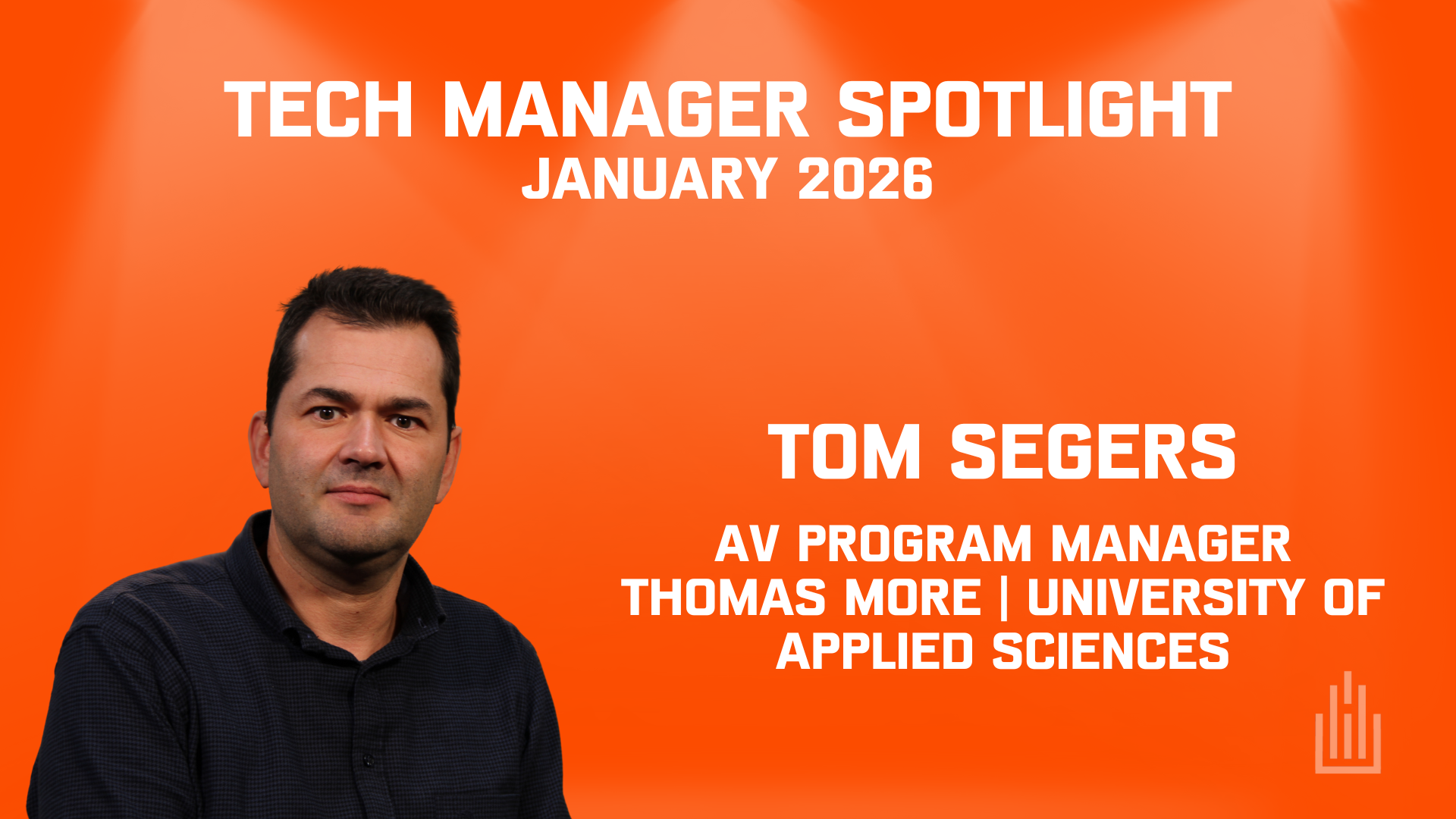Video Killed the Radio Star was the first video MTV played when it came on the air back in 1981. (Yes kids, MTV did play music videos once upon a time, and bonus points if you can name the second video MTV aired without searching for it on Google.) But while the song’s lyrics dealt with feelings towards new machinery used in the media, I assure you that video will not kill the educator star, nor will this machinery ruin a student’s education.
I was attending an AVIXA webinar recently about the steps to build a better higher education classroom, and the presenter insinuated that virtual student outcomes are consistently lower than their in-person counterparts. Now while I couldn’t virtually jump through the computer screen and physically give this presenter a piece of my mind, it did get me thinking about what we as AV professionals in higher education do to help ease an instructor’s mind about virtual or video learning.
We’re 3 years removed from the COVID-19 pandemic, but there’s still a huge misunderstanding it seems when we’re discussing emergency remote learning, which is what we all went through, and good online or virtual course design and delivery. And that misunderstanding seems to be happening for faculty, staff, students, and even parents. So my friends, what can we do when an instructor or an instructional designer comes to us with questions about using more video in a course, be it online, in-person, asynchronous, hyflex, etc.? I’ve found several different suggestions that can help us help instructors if they want to produce video content for their courses yet may still be apprehensive about doing so.
Video is Everywhere
We’ve all said it since 2020 – The COVID pandemic has accelerated learning technology and what students expect by years. As I’ve told my faculty, the genie is out of the bottle, and it’s not going back in. The first video ever uploaded to YouTube happened back in April of 2005; Apple released the first iPhone in the summer of 2007. In short, if they’re not already on our campuses, very soon we’ll have students who have never known a world without video being everywhere. A world where they can access content whenever they want, and however they want. I call them the Netflix Generation of students. They’re not just students anymore, they are consumers, curators, and some cases creators of content. As the old saying in advertising goes, “Follow the eyeballs.” The eyeballs are following the screens.
Students Want Video Content
Along with the above point that video is everywhere, students want it everywhere. I’ve found numerous articles lately, from places like Inside Higher Ed, The Chronicle, Educause, etc., that cite some studies stating students want to have at least the option of attending class live in a face-to-face instance or digitally, either via live stream or a recording later. The term learning spaces no longer only refers to a room with four walls, a bunch of seats, lecterns, a PC, and a projector. A learning space can be anywhere a student wants it to be or feels they learn the best: A dorm, an apartment, a coffee shop, or the quad.
Showing these numbers to our faculty or instructional design team can help convince those faculty still on the fence about the video. Why not give the students what they want, while still teaching in person? Some students prefer to learn in person, some prefer to learn from a live stream, and some prefer to watch the recording on their own time. Look, the traditional brick-and-mortar campus is never going away, but there’s always going to be a student who is sick, who has to work, who has family obligations, or any number of other reasons why they cannot come to class one day. Giving them the option to come to class virtually or watch at a later time is a big win for faculty and students.
Integration With the LMS
Instructors don’t have to worry about posting a video to YouTube, Vimeo, or another video-sharing site wondering who is watching. Most of your major players in the lecture capture space (Panopto, YuJa, Kaltura, etc.) can integrate their products with your major players in the LMS space through LTI. (Blackboard, Canvas, D2L, Moodle, etc.). Have your faculty work with the member of your team who administers your video content system or your LMS admins to make sure it’s set up. Usually, it’s a couple of button presses, and can easily be conveyed in a short video. I have one video demoing how to set up an integration between our LMS and Panopto, and another on how to do the same for Zoom, and combined these two videos are about 4 minutes. It doesn’t take much for us to show faculty or learning designers how to use these tools.
We’re the people doing the AV for the university. We should be able to demonstrate how to use the AV, not just the in-room systems, but the AV in terms of video capture, editing the video, and use of the UCC product of choice on campus and all of its features for learning too, be Zoom, Teams, WebEx, or another product. Explain to your faculty the camera, mics, PC, document camera, etc. in the room can easily be combined in one recording and then automatically posted to the LMS, and you might see more faculty using the technology in the classroom, especially if the recordings are pre-scheduled so the faculty don’t have to touch anything to get the recording started.
Assessment & Analytics
Along with integrating with the LMS, your lecture capture/video content management systems mentioned above and others usually have some kind of a quizzing engine built-in. Usually, those quizzes in your videos can also link back to the grade book, provided you’re adding those videos to the LMS the proper way.
Here’s where we as Ed Tech folks can collaborate with instructors and instructional designers: Your mileage may vary in quizzes in your video content/capture system. Some have more robust quizzing options than others, some offer more question types than others, and some even offer some type of “choose your own learning adventure” type of branching scenario, where depending on what answer a student chooses, they may automatically be jumped ahead or back to a different part of the recording. Or use a tool like H5P or Playposit to add interactivity and questions to a video. So while the tools are there, these are not going to replace traditional exams, either those given on paper or through the LMS. Work with your LD’s and instructors and explain that while in-video quizzing is a good way to check a student’s knowledge on a certain topic, their midterm and end-of-semester exams are never going away.
With this, there’s also the ability to see who’s watching the video as well. In most cases, the instructor, video system admin, or even the learning designer can see things like how many times a video has been watched, who is watching and how much of it, and certain points where maybe students are skipping over or re-watching numerous times. The analytics can potentially allow your professors to see if there are things they need to explain more clearly or review, or if there are parts of their lectures they can maybe cut down. In some lecture capture systems, a student also can add a discussion post right on the video that’s time-stamped, so an instructor or other students can go back, read the post, and type a reply as well.
And for the instructors or administrators who think recording lectures or having asynchronous recordings hurts learning outcomes or a student’s grade, show them this article linking to a study on how in some cases, video is more effective than in-person learning. I recently had an instructor whose class I’ve recorded for 10 years now tell me he was meeting a “pretty conscientious student” (His words.) during office hours, and the student reported the reason he wasn’t coming to class as often now was that he liked the video better because if there was a topic he didn’t understand, he could rewind and re-watch that portion of the class as often as he needed until he got it, and then could come to office hours like he did if necessary. The student’s grades are not suffering according to the instructor.
So that’s the technical reason why we can help instructors and learning designers use video in their courses more effectively. But what about the more intangible items, like how to feel comfortable on camera? Is there anything we can do there to help out? Yes, there is actually, and I’ll go through some of those details next month.










